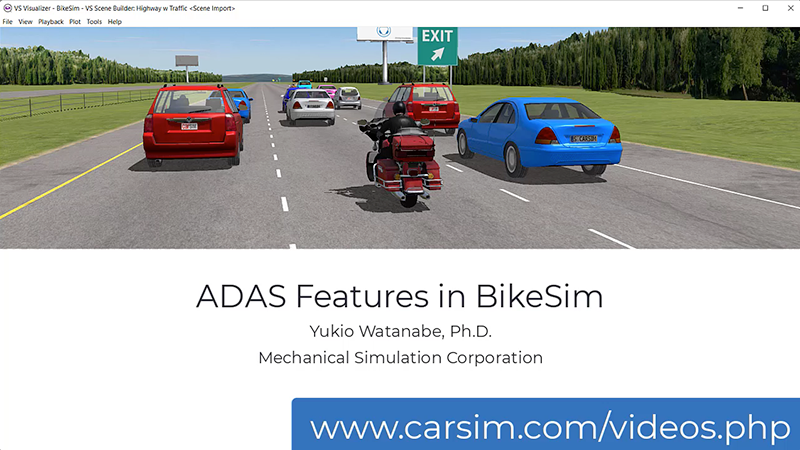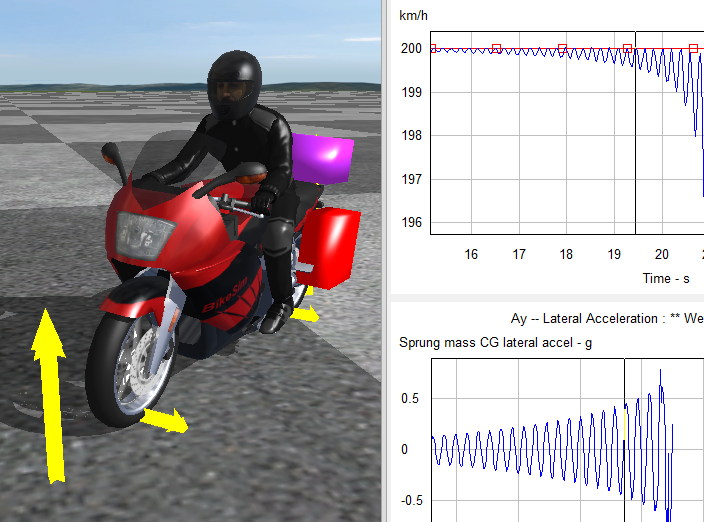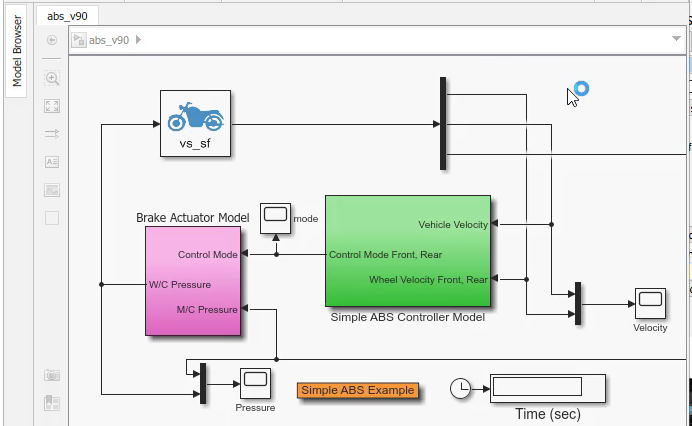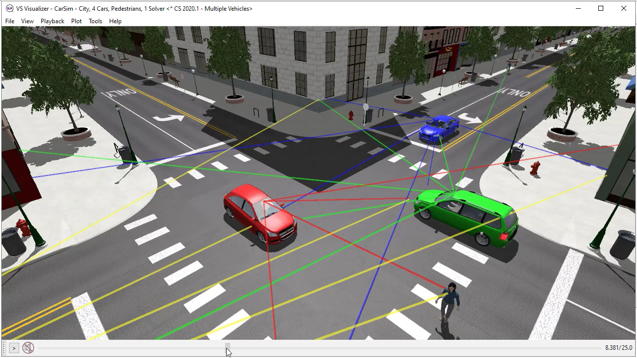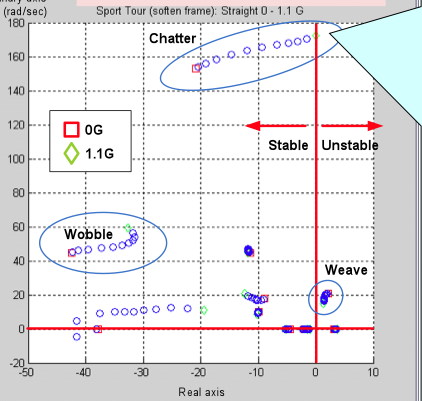BikeSim delivers the most accurate, detailed, and efficient methods for simulating the performance of two- and three-wheeled vehicles. With more than twenty years of real-world validation, BikeSim is universally the preferred tool for analyzing motorcycle dynamics, developing active controllers, calculating overall system performance, and engineering next generation active safety systems.
With manufacturers facing compressed product release cycles, BikeSim provides an intuitive set of tools for engineers to quickly evaluate complete motorcycles, sub-components, and active controllers in complex, simulated driving environments. As more companies and motorsports organizations embrace simulation based engineering, BikeSim provides a system- based modeling approach to help users focus on their area of expertise while keeping the rest of the simulation environment constant.
BikeSim Advantages
CarSim, TruckSim, and BikeSim are used worldwide by over 110 OEMs and Tier 1 suppliers and over 200 universities and government research labs. There are more than 130 active BikeSim seats, not including riding simulators or students. Here are some reasons why so many engineers have selected BikeSim:
BikeSim is a standalone application. It does not require any other software to perform simulations.
BikeSim has a standard interface to MATLAB/Simulink.
BikeSim is used extensively by seven of the largest motorcycle OEMs.
BikeSim allows users to build complex scenarios and test event sequences.
BikeSim supports Software-in-the-loop, Model-in-the-loop, and Hardware-in-the-loop.
Model options as ADAS sensors are supported in the BikeSim Math Model library. Here is the PDF with BikeSim Model and License Options.
BikeSim has an intuitive user interface and powerful analysis tools (see any of the videos).
BikeSim supports vehicle sensors and interactive traffic for V2V and ADAS development.
BikeSim includes Linearization capabilities that can be used with MATLAB to generate Eignevalues, root locus plots, frequency-response plots, etc.
BikeSim includes over 1900 pages of indexed documentation covering all aspects of the software.
BikeSim includes numerous example vehicles, roads, and procedures to assist first-time users.
BikeSim is economical in comparison to other commercial vehicle dynamics software tools.
VehicleSim Technology
CarSim, BikeSim, and TruckSim all use technology first introduced in 1990 and developed continuously since then. Efficient parametric math models reproduce system-level vehicle dynamics behavior, under the control of a GUI intended for engineers who need to evaluate vehicle/controller behavior without spending weeks of training. VehicleSim products also include the VS Visualizer tool for viewing simulations with plots and photo-realistic animation.
In addition to the built-in capabilities of the BikeSim models, the VehicleSim software tools include methods to extend the capabilities with user-defined programs and/or connections to third-party software:
Commercial simulation environments Simulink simulation environments Simulink (the MathWorks), and LabVIEW (National Instruments).
Simulation environents that support the Functional Mockup Interface (FMI); BikeSim can automatically generate Functional Mockup Units (FMUs) that work in many external software environments.
VS Commands (the built-in scripting language).
Run with custom programs (MATLAB, Visual Basic, C/C++) using the VS SDK (software development kit).
Run with remote control via Windows COM and other methods.
Support of HIL (hardware in the loop) testing on major RT (real time) platforms.
See the links in the sidebar for more information about the technology and simulation features available in BikeSim.
Introduction to BikeSim
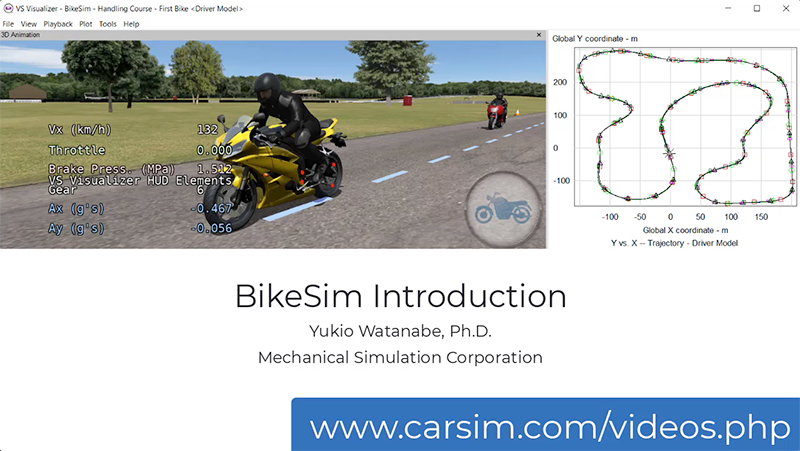
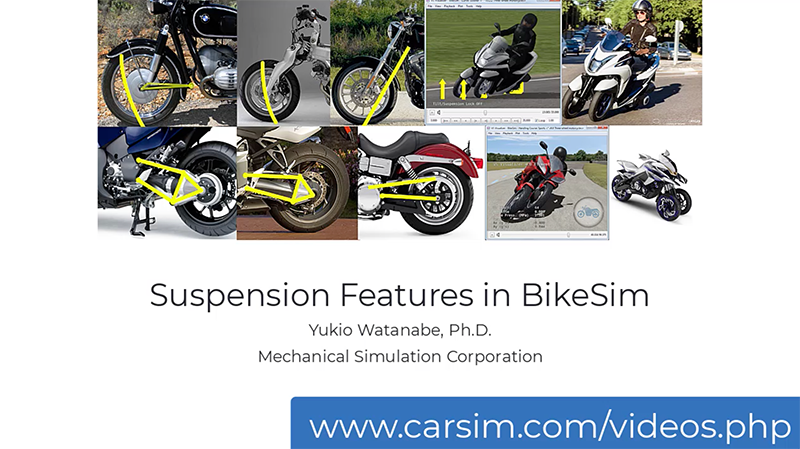
BikeSim Information
OverviewPublications
PDF Documents
Introduction to CarSim (and BikeSim)BikeSim Brochure
BikeSim Math Models
BikeSim Model and License Options
3D Animator Shapes
System and Software Compatibility
Built-In Features
ADAS: Moving Objects and SensorsAnimation and Plotting
Automation and COM
Built-In Controllers
GUI, Database, and Documentation
Modular VS Math Models
Paths and S-L Coordinates
Roads and Terrain
VS Commands Language
VS Scene Builder Tool
Co-Simulation Technologies
Real-Time HIL SupportSimulink, FMI/FMU, LabVIEW
Unreal Engine
VehicleSim SDK

